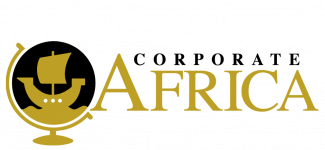
Speaking last week at the Smart Energy Forum in Lagos and Abuja in the presence of Nigeria’s top energy decision-makers, senior energy experts from Wärtsilä presented the latest results of an in-depth study which models the most cost-effective and reliable energy mix that can be built each year in Nigeria.
Nigeria is the largest and one of the fastest growing economies in Africa, yet despite a wealth of natural resources, the country continues to struggle with acute electricity shortages, which constrain its economic development. To combat this, last year the Nigerian government formally launched “the Decade of Gas”, setting gas development and utilization as a national priority. Identifying the most cost-effective and sustainable power generation strategies was the theme of this week’s Smart Energy Forum in Lagos.
MODELLING LONG-TERM ENERGY SYSTEM SOLUTIONS
One of the highlights of the event was the presentation of Wärtsilä’s most recent 2022 to 2040 Analysis of Nigeria’s National Power System, using the advanced Plexos modelling tool to quantify system level benefits of different technologies in the Nigerian power system. The model is used to analyse and identify the optimal capacity expansion for the country.
The model shows that the country requires more aggressive capacity additions than the current situations, referred as business-as-usual scenario, in order to achieve the country’s stated 30-30-30 vision. But looking beyond 2030, and by mapping the country’s solar and wind potential for renewable energy, together with transmission data from five major regions, an advanced 30-30-30 scenario can be envisaged which would generate additional power and significant cost savings.
This advanced scenario recommends the installation of 45 GW of low-cost renewables in the north and west of the country by 2040, while concentrating 43 GW of gas-fired internal combustion engine (ICE) power plants in the southern regions with access to low-cost locally sourced gas. Strengthening the transmission capacity between north and south will greatly benefit the central regions as well.
As more capacity is added to the system, the cost of electricity is predicted to fall drastically within the first years, as locally sourced gas fuels more cost-efficient gas power generation to overtake expensive diesel. With the advanced scenario, cumulative saving to 2040 of up to $430 billion can be achieved when compared to the business-as-usual scenario.
A FLEXIBLE SOLUTION TO MEET THE NEEDS OF THE NIGERIAN MARKET
For Wärtsilä, the choice of power generation technology is as important as the choice of fuel. In a system that maximizes the use of low-cost renewables, being able to rely on flexible power technologies becomes paramount.
In this context, ICE power plants become the technology of choice because they are flexible by design. They have a high operating efficiency, even at partial load, and are made to cope with regular start and stops. On the other hand, combined cycle gas turbines (CCGT) lack the flexibility to match the fluctuations in electricity demand. They rely on a consistent and pressurised gas supply and are most efficient when operated close to full capacity. They are not suited to offset the intermittent supply of renewables.
Detailed technology comparison between CCGT and ICE power plants show that for an equivalent 350 MW plant running 8,000 hours per year, Wärtsilä’s solution saves between 11 to 17 million US dollars per year compared to CCGT solution, thanks to its better performance in hot climates, better part-load efficiency and lower investment cost.
But there is more. Flexible ICE power plants offer several other advantages relevant in Nigeria. Thanks to their modular design, ICE power projects are easy to construct, fully scalable and can be deployed in phases. They can be ramped-up or down quickly to adjust to demand, and also provide a great hedge against fuel supply risk, as its engines can be operated on natural gas, Diesel, HFO or biofuels. What is more, they require little water to operate: Their water consumption is less than 1 % compared to the CCGT technology.
Today, Nigeria’s electricity system faces a perfect storm. Small, inefficient, expensive, and polluting diesel generators are widely used to compensate for weaknesses in the country’s grid capacity. Despite recent improvements, the gas supply system is not fully stable, which places additional strain on country’s still fragile electricity network.
Wärtsilä is convinced that building flexibility into the system by investing in gas engine power plants can provide a stable and reliable long-term solution to Nigeria’s energy challenges. As Wale Yusuff, Managing Director of Wärtsilä M&P Services Nigeria Ltd, concluded at the end of the event: “It is clear that IPPs can provide an important source of investment for new power projects. A prototype has been established and electricity tariffs are crystalizing at a fair price for the Nigerian economy and for consumers. At Wärtsilä, we understand the need to be innovative and mindful regarding off-take and financing. With flexibility and reasonably sized projects, we are convinced that together with our Partners and Stakeholders, we can generate sustainable power with improved impacts for the environment and the economy of Nigeria.”
Yusuff Wale is the Managing Director, Wärtsilä Nigeria. Wärtsilä is a global leader in smart technologies and complete lifecycle solutions for the marine and energy markets. He is a seasoned professional in Management, Sales, Marketing and Business Development in the Nigerian Oil and Gas and Power Industry. He started his career as a process engineer in one of the Nigerian Petroleum Oil Refineries. Over the years, he has been actively involved in large transactions of Turbo-Machineries into major FPSO projects in Nigeria as well as Internal combustion engines for both Industrial and Captive Independent Power Plants. He has presented technical papers at both local and international Oil, Gas and Power Conferences. He holds a MSc. and Bachelor of Engineering degrees in Chemical Engineering from the prestigious University of Lagos and Federal University of Technology, Minna, respectively. He has attended many trainings both in Nigeria and abroad. He is a corporate member, Nigeria Society of Engineers (MNSE).

